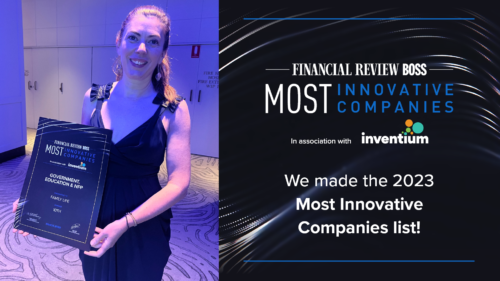Family Life: Most Innovative Company Award
Home > Family Life Announced as one of the Most Innovative Companies in Australia
Family Life is thrilled to have been announced in the Top 10 of the Financial Review BOSS Most Innovative Companies for 2023 (Government, Education & Not for Profit) having been recognised for the Community Listening Tour Project in the Best Internal Innovation category.
As part of the Community Listening Tour Project Family Life partnered with communities across five local government areas, to better understand the impact of COVID-19 on families to better inform our service design and partnerships.

Pictured: Family Life’s Chief Financial Officer, Kate Saporta.
Over 150 participants from government, community and service organisations attended six workshops to review data, discuss and understand issues on a local level, and generate solutions.
Allison Wainwright, Family Life CEO said:
“We are so proud to be recognised by the Australian Financial Review as one of the most innovative companies in our sector.
“The Community Listening Tours deepened our understanding of the needs and experiences of communities in order to develop targeted local solutions. We have shared this information with our partners and the broader community sector to better respond to local community need.
“Innovation is such an integral part of Family Life. As seen with our work on the Community Listening Tour, it helped inform us about what need there was in the community and now it is helping us respond to that need.”
This year the Most Innovative Companies Awards attracted more than 700 nominations. Organisations’ scores were based on three components: an innovation they have implemented in the past 24 months; how the company has embedded innovation into their organisation; and performance on Inventium’s Innovation Benchmarking survey which assesses performance on a range of innovation drivers.
The award night was attended by Family Life’s Chief Financial Officer, Kate Saporta, who was dressed by Family Life Elwood Community Op Shop.
Keep up with Family Life
Join our email list to receive updates, inspiration and innovation.




